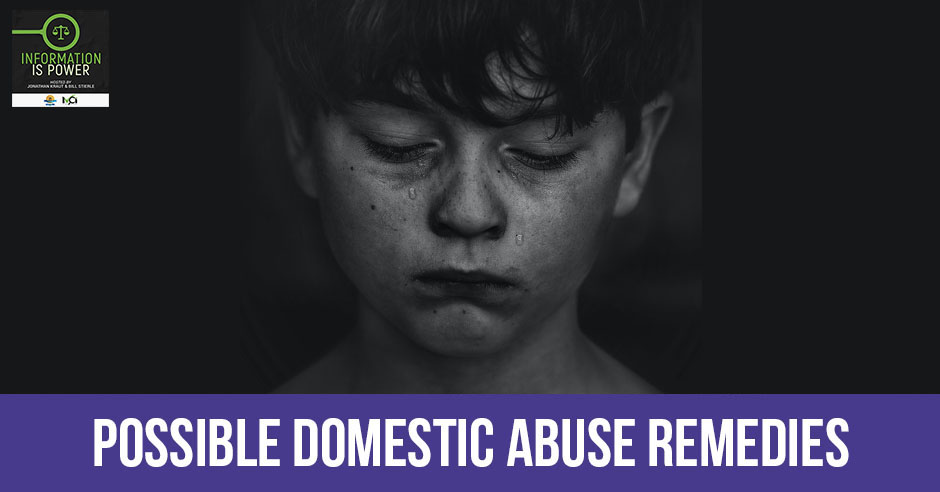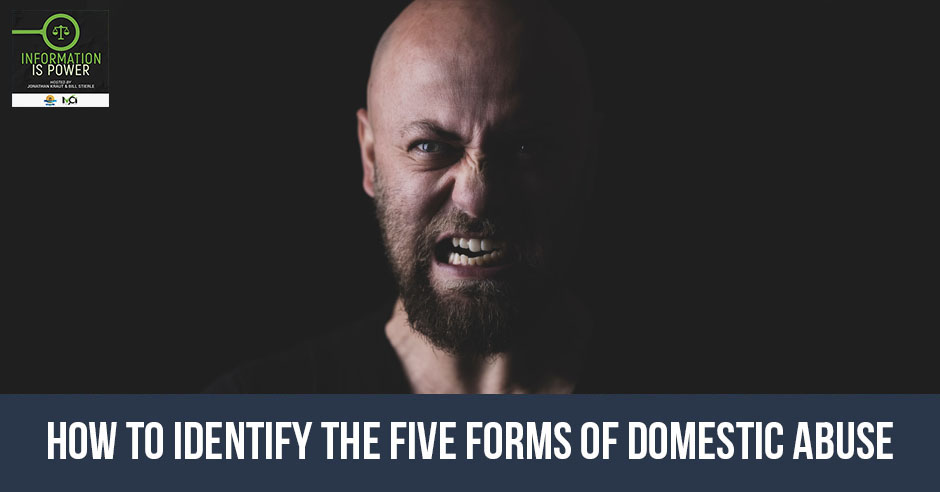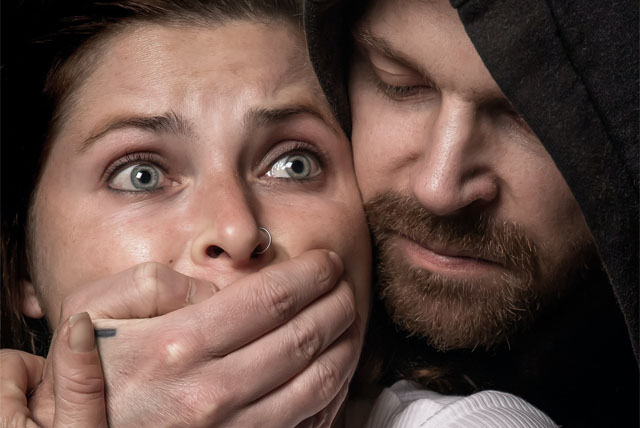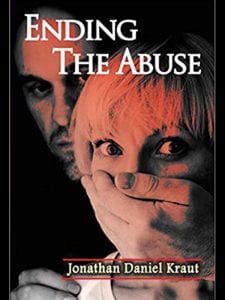Possible Domestic Abuse Remedies
Not every relationship with domestic abuse has to end in tragedy or divorce or continue for years of torment. Understanding how to get yourself out of it the right way with the proper support may help lead to a better outcome. Host, Jonathan Kraut, helps with that by sharing the remedies to possible domestic abuse. He breaks down the seven different ways a private investigation firm could aid or support in handling or preventing domestic abuse situations. Find out more about possible ways to help resolve unwanted interpersonal conduct in this episode.
—
Listen to the podcast here:
Possible Domestic Abuse Remedies
Discover Several Possible Remedies That Can Help Resolve Unwanted Interpersonal Conduct
In this show, we’ll be discussing seven ways a PI firm supports domestic abuse victims. This is put on by myself, Jonathan Kraut and Net Check Investigations. Our California PI license number is 21529. First, let’s define domestic abuse. We use the term abuse, not violence because abuse can be manipulation, emotional control, removal of assets and property, keeping someone from contacting their friends and neighbors. There’s a lot more than just violence, which implies physical contact. Domestic abuse is defined as a family member, partner or potential partner who has negative or destructive or even immature conduct relating to their partner or family member. Both parties can be abusers and victims. In other words, we’re not assigning one person as a permanent role. Either party can fill those positions or sometimes the individuals do alternate or swap roles.
In many cases, this conduct or behavior would be constituting a criminal act or crime. It is ongoing, typically not once in twenty years, but something that happens over time again and again and intensifying with time. We also want to review that domestic abuse is generally learned behavior. Most of the behavior picked up is as a child or as being socialized or viewed by a person when they’re growing up. It can also be passed down from person to person like a disease. Some countries, for example, Japan has almost no abusive acts of rape, whereas countries like Brazil, rape of a woman to become her boyfriend or her husband are common. In Japan, it almost never exists. We know that behavior is learned and passed on from person to person. Otherwise, abusive conduct would be the same in every country, in every population.
Imprinting and showing conduct to another person is transferred that way is also common. Trauma or traumatic events can cause this imprinting and eventually post-traumatic stress at any age. It doesn’t have only to be a young person. I want to state that domestic violence is a narrow term. It should be called domestic abuse, which includes emotional control or emotional issues that are transferred from person to person. A typical abuser characteristic is generally the abusers blame the victim for everything. “It’s your fault. You made me do it. I had no choice. You didn’t clean the house well. If you’d only earn more money,” and so on. Abusers generally make judgments and set the rules.
For example, an abuser may say, “I told you what to do. You didn’t listen to me. This is when you can go out. This is who you call.” Those are typical abuser comments. Abusers tend to ignore the needs of others. They put their focus on their needs and their feelings. Abusers could often be described as being immature and their conduct may be childlike. Typical victim characteristics, victims often take the blame and responsibility for what the abuser does. One common comment is, “I try to make him or her better. I did my best.” Those are signs of someone accommodating or trying to take the blame for what the abuser does.
Many victims have tremendous noble characteristics, a lot of patience and willingness to help. In fact, these noble characteristics often lead towards being victimized. Victim traits are common among health care professionals, teachers, nurturers and those with a big heart. Unfortunately, those were the greatest traits of all. I’m often our victim of abuse because they’re trying to accommodate and make better the misconduct of another person. We want to get into some new stuff, things that we haven’t talked about before.
A typical abuser characteristic is victim blaming. Share on XA refresher is there are five abuser traits or general characteristics, the cycle of violence type. If you haven’t heard that, these are common interactions that are negative over time. Typically, there’s some discomfort or some tension which erupts at some point in violence and then the abuser asks for forgiveness, “I’ll never do it again. I’m sorry. I don’t know what happened to me.” Not only does it happen again, but each time it tends to get more and more intense. There is the sadistic type, which tortures, maims, cuts, hurts, burns not only children and pets which are innocent, but also bystanders, neighbors. The purpose is to put the victim in fear. The controlling type who wants to control every aspect of contact and interaction of the victim include kidnapping, holding hostage and so forth.
The stalking type, which wants to take revenge. The co-dependent type, which can be split down two sides. One is emotional co-dependency, meaning a constant need for interaction and emotional contact and a chemical co-dependent, which may use drugs or alcohol as a reason or excuse to abuse. How will a PI firm react to this? First, a PI firm should identify what abuser traits are present. You can’t throw a blanket on every abuser and say they’re all the same. Some abusers are highly intelligent. They may be narcissistic, sociopathic or typical in every way other than their conduct towards their partner. They may be sweet, wonderful, caring and kind except in private. Going back to the previous five traits, a PI firm first has to identify which traits are appropriate and that would help determine a strategy.
In other words, you would not handle a sadistic type the same as a cycle of violence type. This is to reduce risk as well. Everyone in contact with an abuser at some point can be at risk. You’ve got to know what you’re dealing with first. You don’t walk into a fire without the right equipment and the right understanding of what’s going on. In the same way, a PI wants to walk into this situation to help resolve it and lower risk, not increase it. The types of evidence also will be different. A PI firm will not be looking for some evidence with one abuser type as with another. Also, the victims have to be willing to go forward. I’ve worked on dozens of cases where we’ve got great evidence.
The victim says, “Yes, I want to prosecute. I’m tired of this. I can’t handle it anymore. My children are suffering. My family is suffering. My job is suffering. My health is suffering.” They want to go back and say, “I’ll work with him or her one more time, maybe this time.” That is a waste. We know that once it gets to the point where a PI firm has to get involved, not only is it serious but it could be deadly. My recommendation is that victims have to be willing to go forward and have to stick with it. If you are a victim, don’t blame yourself for what happened. Please get some help and let us help you. Finally, you have to have a PI firm that understands the difference.
Help Clarify The Situation
Let’s talk about support number one, how a PI firm can support a domestic violence situation. The first is to help clarify the situation. Provide independent evaluation to the client as to what’s going on. Explain the risks and a safer process that can be followed. Get a commitment from the victim. Get support for the victim, from coworkers, family and friends. In some cases, getting that support, that level of safety around the victim is crucial because the victim is unwilling to go forward without support. We’ve seen that many times.
The PI firm also is a big pillar of support for victims, so clarify the situation. Also, get the dynamics of the case and validation from other agencies. Let’s say that we believe a victim is being haunted or tortured or abused by a co-dependent type, an emotional co-dependent. Maybe the PI firm and their staff are not quite trained to identify that. It would be good to share that information with the local domestic violence center to get their feedback or take on it. Is this what we think it is? We want to validate independently outside the agency what we think is going on.
Creating An Effective Plan
PI support number two, create an effective plan. As in number one, we want to clarify the situation. Once it is clarified, there must be a plan devised based on the objectives. Objectives can change person to person. One objective is, “I want custody of my children.” Another objective is, “I want a restraining order, a protective order. I don’t want to see him or her forever.” Another objective could be, “I want to divorce.” Another objective could be, “I want counseling and treatment for both of us because this could be salvaged.” We have seen some cases where the relationship can be salvaged.
The objectives set the plan. We also want a budget. One thing that I have to say is that sometimes it takes money to do a good job. Now domestic violence centers, as in our case, can hire us and there will be no charges to the victim. That isn’t common but can happen. There are budgetary amounts from different state and county agencies to help support the victim, but you want to provide a budget. If a person has means and they have money, sometimes you get what you pay for. You want a good job and it can be quickly done. Sometimes the paperwork from the county or state may take weeks, if not months. It’s not worth it. Someone could be dead in weeks or months. If you have the money, my best advice is to go forward right away and not apply for grants or for other support.

Domestic Abuse Support: Domestic abuse is defined as a family member, partner or potential partner, who has negative or destructive or even immature conduct relating to their partner or family member.
We also want a plan to coordinate with attorneys and domestic violence agencies. Attorneys are crucial because a lot of times they will tell us what they need as evidence according to what the objective is. If it’s going to be divorce or child custody or child support or a restraining order and there’s an attorney involved, the PI firm is providing information for the attorney at the attorney’s wishes. We can argue in private about what we should do and not do. In court, we all have to be unified as to what we’re trying to accomplish. Possibly to get a plan, we need the cooperation of coworkers, family members and friends. For example, let’s say we have a stalking type.
The stalking type drives by, honks the horn, sometimes yells obscenities, and sometimes make phone calls or text messages from burner phones that can’t be traced. It’s sometimes good to get your neighbors to allow us to put cameras in their windows so that the perpetrator or the abuser can be filmed and identified. It changes everything, a different view to get their license plate, to see them from the side. Sometimes they yell and scream where they’re out of sight or honking or driving by or knocking on the door. Their staging area is next door or across the street so having a camera over there would be great.
Sometimes they’re texting or phone call a neighbor or a family member, getting their cooperation and documenting those calls and texts would be great. Coworkers also can help a lot to verify. Let’s say that a violent person is approaching. You want to get security right away. Call 911 right away before that person gets inside. We may want to coordinate with law enforcement. A lot of agencies are very helpful and cooperative. All you’ve got to do is ask and say, “This person has vandalized my car a couple of times I believe. I don’t have it on film, but now I can put a camera. If I do get a camera, what is it that you need me to do to prosecute criminally?” Law enforcement will tell you, “This is what you need to do.”
Locating And Serving The Abuser
PI support number three, locate and serve the abuser. As a PI firm, we love to skip trace, evaluate the habits and investigate someone’s conduct so that we can serve them. We have to serve in order in person. Rarely can it be mailed or handed to a third party. We’ll try to locate their residence, their work activity, their hobbies, where might they go on Sunday afternoon and in a friendly and innocuous way say, “There’s a hearing coming up. These are papers to go. You don’t have to go, but if you want your viewpoint and your opinion heard, you should go.” Typically, they thank us. It doesn’t have to be a negative and difficult interaction. It can be friendly, safe and supportive.
Abusers have a right to be heard. A lot of times, there’s information they provide that helps for fairness to come out. We want to meet the need for fairness for everybody. Sometimes we’ll identify someone’s habits or location through social media and postings, “I’m going to be at this nightclub. I’m going to this restaurant. I’m coming back from a trip,” and that will alert us as to where to go, what to do and how to approach that person at that time. We can also attempt to serve and locate family members, witnesses, coworkers, and other people that are related to the case that can provide information to the court. Serving a subpoena in court does not mean that the person will show up, but with a proof of service affidavit, we can tell the court that we did make contact. We did serve them. At least the person’s rights have been preserved or whether they choose to appear or not is up to them.
Coordinating With The Attorneys
Number four, coordinate with the attorneys. The attorneys are telling us what they need to prevail in court. We want to talk about what evidence we have with the attorney of record if there is one. Since we can’t give legal advice, we can suggest what we think might happen. Believe it or not, 1,000 cases I’ve been part of and I would never represent myself in court. There are a whole lot of things that I don’t know, their motions, objections and procedures that I don’t understand. Even having heard some of them hundreds of times, I’m not legally trained and I would not know what to do. A layperson who believes that they can without being in court very often or at all navigates the legal system is probably not a good approach.
We tell people you need an attorney. We can provide confidential information that is not allowed to the clients, to the attorney. For example, let’s say a person says, “I want this person served.” It’s a part of a domestic violence case. We find that person. We serve that person. Sometimes we don’t tell our clients exactly what they were doing or where they live for everybody’s safety. Now the attorneys can know and sometimes the attorneys will bring it up in court or the address is made public. We let the attorneys decide that. We don’t try to breach confidentiality. Just because someone’s an abuser doesn’t mean their rights to privacy are waived.
Domestic abuse is generally learned behavior picked up from childhood growing up. Share on XWe gather evidence that’s admissible in court. A lot of information that we gather through private means is admissible but is not admissible through another person conducting themselves as a PI would. We often also review the cases and give ideas. Having been in contact with over 1,000 victims and abusers and involved in hundreds, if not thousands of cases, I would say we have some idea as to what to do in court on. Also, we know a lot of judges. We’ve been in court a lot, so we know them, they know us and we can suggest to the attorney what the judge would accept and what the judge would if they don’t know, which often they do know too.
Gathering Evidence
Number five, how a PI can support a domestic abuse case? We gather admissible evidence and it’s got to be in a certain way. We can’t set up a ladder and film at an angle through a window into a house. Evidence must be visible and perceived to be public from the street. We can’t go through any extraordinary means. We cannot tap phones. We cannot put recording devices in someone’s house or place of business. We’ve got to protect a person’s right to privacy, whether they’re accused of being an abuser or not. Many times, our video recordings, pictures and sound recordings have to follow certain criteria. For example, let’s say that a person is in a restaurant, in a public area where there are lots of tables and can be overheard by any table or by any server that we can record.
We can either make a video recording. We can take pictures or sound recording. Let’s say a person goes into the back room with the door partially open where there’s only one table in that room. We cannot record or film or video what’s going on into a space that’s perceived as private. Another example is one lady who thought her husband was cheating and he picked up some woman at a place that we can’t say where and took her to a hotel. They went inside the hotel room. We cannot go inside the hotel room to determine what occurred. All we can say is that this person picked up a lady at this time in place. We have a picture of her, which we probably won’t share with the victim in case there’s retribution, and went into this hotel, were in this hotel for hours and left. That’s what we can state as true.
We can’t invite privacy breaches in our work. That’s not admissible. Whatever went inside that private room, we can’t say and we don’t know. We can conduct surveillance. We can review the documents. We can retrieve documents. We can gather case information on other similar cases that might pertain. We interview witnesses. We can prepare investigators and agent notes. Sometimes we can help serve an affidavit to be signed by the witness so that they don’t have to appear in court. Sometimes we serve them with a subpoena and we help them get to court. Even if we have to pick them up and drive them, we’ll do that.
We’ll research and obtain records from any appropriate county in any state. Our network allows us to do that without much difficulty. That does help in court. We can serve, analyze and review financial records, financial statements. On my staff, we have a certified fraud examiner who has permission and the credentials to review confidential financial information, who’s paying so-and-so, what’s being spent on what. If we get a subpoena of bank statements or records, our Certified Fraud Examiner, known as a CFE, can do a great job on that. Finally, we can locate and prove employment and income. Sometimes it’s a little difficult if you’re self-employed, but sometimes we pose as a buyer or vendor or future client and we’ll get everything.
Testifying In Court
The final and last part of this is court testimony. Item number six is testifying in court. A PI could testify as an expert witness, a material witness or an eyewitness. An expert witness is the opinion of the person in court as to what they believe is true and why. Based on experience, the court has to admit that a person is an expert. A material witness is someone who provides film, video, camera, documentation and statements but does not testify other than, “Yes, I took pictures. Yes, I took video.” An eyewitness is someone that observed an interaction between other people, typically perhaps a violent exchange itself.
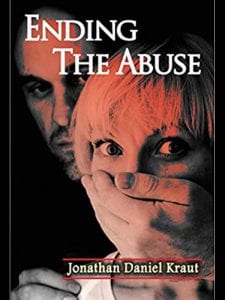
IIP 13 | Domestic Abuse Support
We also allow evidence to be introduced by attorneys. One thing that’s funny is the attorney can’t say, “Here are pictures,” and slam them down. The courts say, “Great.” There needs to be what’s called a foundation. That is where a person who took the pictures is first asked to explain how these pictures were taken, when and where, with what device and whether the documents, the pictures, the recording, the video would be entered into evidence. The judge will enter it into evidence. That’s called creating a foundation. That’s what attorneys need to do. They don’t send pictures or videos to the court and that’s it. It’s got to be introduced in a certain way.
Also, the person providing the evidence in this foundationary process can be challenged and can be examined by both sides. One example is, “Where were you? What time was it? How far was it? What camera did you use? What was the lighting?” to help paint a picture as to whether this evidence could be used in court or could provide information of value. We also provide measurements, analysis and metrics. For example, someone says, “I heard them fighting and screaming through the window at night.” We ask, “Where were you?” “I was on the road.” We can say, “Were you standing here?” “Yes, I was.” We can say, “That’s 120 feet.” We would go out and test that if someone could hear a conversation in a closed house with the windows closed at 120 feet away as to whether that’s a reasonable declaration by the witness or not.
Sometimes you can’t hear anything at 120 feet with the window closed. We’ll do things like that. We can also offer evidence of concealed income or concealed employment, business cards, bids for work. Someone may come out and give you an estimate representing that they’re with a company. We love to do that. We can offer evidence of misconduct, abuse and bad character that may go above and beyond that one incident or one case that we’re working on. We can find witnesses that have similar stories and similar experiences with the abuser.
Support In Case Follow-Up
Number seven, follow- up. A PI can support you with case follow-up. This is after the ruling is made. We can maintain documents and evidence for future use. Typically, we keep documents for about ten years. We can conduct surveillance to determine if the abuser is violating or is following a court order. We can testify regarding those violations in court. “Yes, we saw he or she do this. Yes, we did record it. Yes, we did hear it.” We’re making coordination with the attorneys even after the case, just in case they need us for something. We can support client treatment and morale. A lot of times, we’ll refer our clients after our work is done to the right agencies for support and even to their friends or coworkers or talk to them on their behalf to help them out.
If you have any questions or you want to seek a better understanding, I did write a book called Ending The Abuse. You can find this online at Amazon and other providers. Also, we have a website called EndingTheAbuse.com, where there’s domestic violence or domestic abuse survey, traits of an abuser, traits of a victim. The book talks about in more detail these abuser traits, these five types. It talks about how to disconnect from these individuals, different approaches and different resources that you might have. You can go online and buy it or call my office. A lot of counseling and social service agencies use this book as a guideline for working with the victims and abusers.
Many victims have tremendous noble characteristics but unfortunately, these characteristics often lend towards being victimized. Share on XWe consider that a good resource. I also suggest, if you’re curious, maybe to find other books on the topic. There are a lot of great books out there. I invite you to check out our other shows and go to NetCheckPI.com for a directory of blogs, shows and other resources. Please contact my office or me if you have any questions. Although we operate in California, we have a lot of connections and referrals in other states that are very competent and very capable. If you need an attorney, locally, we work with some, depending on what you may need, and sometimes they’re perfect and sometimes will not have a recommendation, but we try to help out. Remember, information is power and good decisions start with great information. Thank you for reading. We’re hoping that whatever issue you have to resolve is processed quickly, safely and effectively. Thank you so much.

